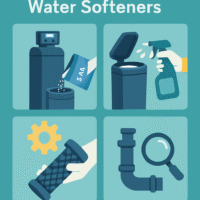Donald C. Tillman Water Reclamation Plant
The Donald C. Tillman Water Reclamation Plant, located in Los Angeles, California, is one of the largest water recycling facilities in the United States. This state-of-the-art facility has been instrumental in addressing water scarcity issues in the region and has set the standard for sustainable water management practices.
History:
The Donald C. Tillman Water Reclamation Plant was commissioned in 1984 and was named after Donald C. Tillman, a former general manager of the Los Angeles Department of Water and Power. The plant was built in response to the growing water demand in the region and the need for sustainable water management solutions. Since its inception, the plant has been playing a crucial role in treating and recycling wastewater to supplement the region’s water supply.
Treatment Processes:
The Donald C. Tillman Water Reclamation Plant utilizes advanced treatment processes to ensure that the water recycled meets the highest quality standards. The plant is equipped with a series of treatment facilities, including primary treatment, secondary treatment, and tertiary treatment processes. The primary treatment involves the removal of large debris and solids from the wastewater, while the secondary treatment uses biological processes to break down organic matter. The tertiary treatment, which is the final step in the process, involves the removal of pathogens and other contaminants to produce high-quality recycled water.
The plant also utilizes innovative technologies such as membrane bioreactors and ultraviolet disinfection systems to enhance the treatment process and ensure the purity of the recycled water. These advanced technologies allow the plant to produce water that is safe for irrigation, industrial use, and even potable water in some cases.
Benefits of Water Recycling:
The Donald C. Tillman Water Reclamation Plant has brought about numerous benefits to the region and the environment. One of the main advantages of water recycling is the conservation of freshwater resources. By treating and recycling wastewater, the plant helps reduce the strain on natural water sources such as rivers and aquifers. This is particularly important in arid regions like California, where water scarcity is a growing concern.
Additionally, water recycling helps protect the environment by reducing the discharge of untreated wastewater into water bodies. By treating wastewater to a high standard, the plant helps improve water quality in local rivers and streams, ultimately benefiting aquatic ecosystems and wildlife.
Moreover, water recycling also provides a sustainable water supply for non-potable uses such as irrigation, industrial processes, and groundwater recharge. This helps reduce the reliance on imported water sources and contributes to the overall water security of the region.
Community Engagement:
The Donald C. Tillman Water Reclamation Plant is actively involved in community engagement and education initiatives to raise awareness about water conservation and sustainable water management practices. The plant conducts tours and workshops for local schools, community groups, and other stakeholders to showcase its operations and promote water recycling as a viable solution for water scarcity.
In addition, the plant collaborates with local governments and organizations to implement water conservation programs and initiatives. These efforts help empower the community to take proactive steps in reducing water waste and promoting sustainable water use practices.
Future Outlook:
As water scarcity continues to be a pressing issue in California and other regions, the role of water reclamation plants like the Donald C. Tillman Water Reclamation Plant will become increasingly important. The demand for recycled water is expected to grow as communities seek sustainable solutions to their water supply challenges.
To meet this growing demand, the plant is continuously upgrading its infrastructure and exploring new technologies to improve the efficiency of its treatment processes. By investing in research and development, the plant aims to further enhance the quality of the recycled water and expand its potential uses in various sectors.
Overall, the Donald C. Tillman Water Reclamation Plant serves as a shining example of how innovative water management practices can address water scarcity issues and promote sustainability. By treating and recycling wastewater, the plant not only conserves precious freshwater resources but also contributes to the health and well-being of the community and the environment.
Sources:
1. Los Angeles Department of Water and Power. “Donald C. Tillman Water Reclamation Plant – Recycled Water.” https://www.ladwp.com/tilmanplant
2. Department of Public Works, City of Los Angeles. “Water Reclamation Plants.” https://www.lacitysan.org/san/faces/home/services/recycling/recycledwater/tilmanwaterrecyclingplant

